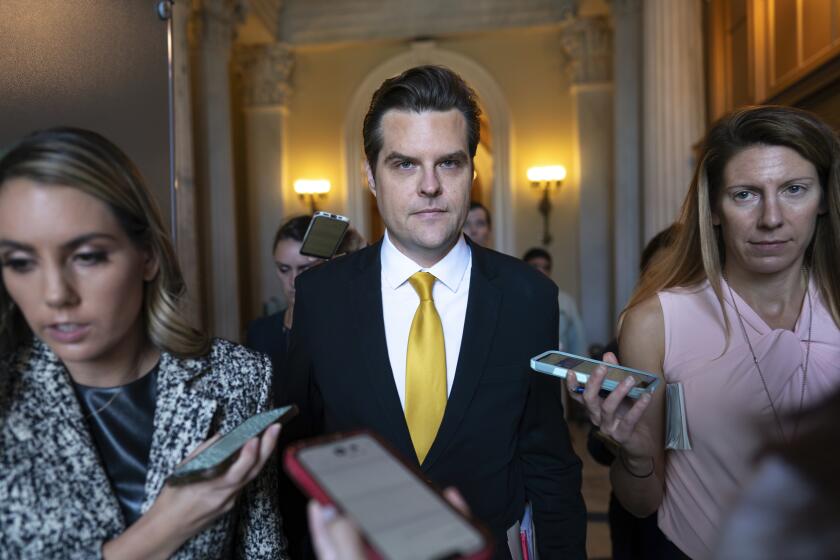A federal boost for the jobs market
Companies are not hiring, but itâs not because theyâre worried about the national debt. The economy is not growing, but itâs not because the public sector is laying off union members. So why are the two major parties focusing their energies on lowering the national debt (Republicans) and funding public sector jobs (Democrats)?
When the Democrats controlled both houses of Congress and the presidency, they passed a stimulus bill that directed huge resources toward the preservation of public employee jobs. At least one dollar in four in the stimulus bill went to states or cities to directly preserve government jobs, to create new public sector jobs (via âshovel-ready projectsâ) or to protect those jobs by paying the burgeoning Medicaid bills that might otherwise have required states to reduce their workforces to pay for healthcare. This may have pleased the Democratsâ political base, but it didnât address the real employment problems.
When the Republicans had blocking strength over the debt ceiling, they failed to use that power to address unemployment. Instead, they were focused on scaling back growth in government spending and resisting tax increases. That played to the Republican political base, but it did nothing immediate to help the millions of unemployed Americans.
If each side would stop focusing on pleasing its base and ask instead what can be done about unemployment, we might be able to agree on a couple of basic principles. First, for the recovery to succeed, the private sector (not the public sector) needs to hire more people. And second, the private sector can be incentivized to do so with government spending.
It will be difficult to get Democratic politicians to agree to the former, and to get Republican politicians to agree to the latter. But here is how it could work.
The federal government could agree to provide for 50% of a new employeeâs salary if an employer adds a job and gives it to someone whoâs been out of work six months or more. With more than 6 million people whoâve been unemployed that long, businesses would have a large hiring pool.
This would be costly, of course. If every one of the qualified employees was hired and received the average private sector wage ($28.10 per hour), working a 40-hour week for 50 weeks a year, the price tag would be $175 billion a year. But to put the numbers in context, the stimulus bill cost $787 billion.
Where would we get the $175 billion? The Federal Reserve could provide the funds, with no serious risk of inflation and without any increase in the debt ceiling. In 2009, private banks sold the Fed large numbers of mortgage-backed securities that had been clogging up their balance sheets. Since then, the Fed has been selling those securities, often at a profit. In similar fashion, the companies that hire people under this program would sell the Fed corporate bonds or restricted stock, as the company prefers. The bonds could be created so as not to be payable, and the stock not convertible into common stock, until the company has increased its profits substantially and could easily repay the sums.
To minimize the temptation for employers to wait until a worker has been out of work for six months, we should make the amount the federal government will provide proportionate to the amount of time the employee has been out of work, sliding from, say, 10% of salary for an employee out of work at just six months up to the maximum of 50% at, say, a year out of work. To prevent dropping a current worker to hire a long-term unemployed worker at half the cost, the employer would have to refrain from laying off workers during the time it received the subsidy for the new workers, and a reasonable time beforehand. These conditions would actually lower the overall cost of the proposal.
Cutting the cost of hiring an employee in half would provide powerful incentives to companies to hire. And as those employees began spending their paychecks, other companies would begin to expand, fueling an economic recovery that would allow companies to keep good new employees on the payroll even after the subsidies ran out.
This would be a bold step for the Fed to take alone, though it could do so. It would be far better for Congress to pass legislation encouraging the Fed to take these steps.
Is there any chance Congress would take such action? Possibly. It would not require any congressional expenditure. It would not take a tax increase. It would not require borrowing by the Treasury.
What it would do is to put pleasing political bases aside to help unemployed people find jobs.
Tom Campbell is dean of the School of Law at Chapman University and a professor of economics as well as law. He was a five-term Republican congressman, serving on the banking committee and the joint economic committee.
More to Read
A cure for the common opinion
Get thought-provoking perspectives with our weekly newsletter.
You may occasionally receive promotional content from the Los Angeles Times.










